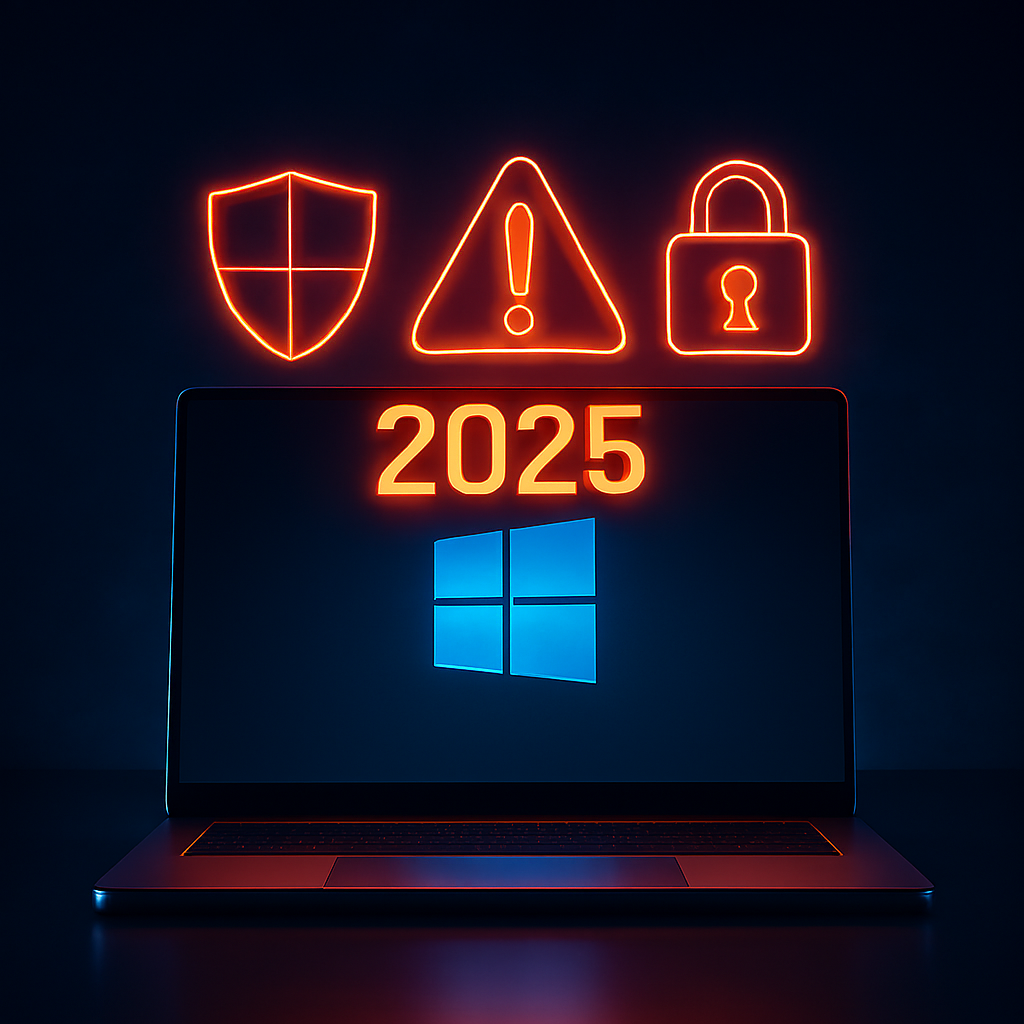Most Common Windows Security Threats in 2025 and How to Avoid Them
Windows remains the most widely used operating system worldwide, making it a frequent target for cybercriminals. As technology evolves, so do the tactics of hackers and malicious actors. Staying aware of the most common Windows security threats in 2025 is critical for protecting your personal data, business files, and overall system performance.
This guide outlines the top threats Windows users face this year and provides practical steps you can take to minimize risks.
Why Windows Security Is More Important Than Ever
With the increasing reliance on cloud services, remote work setups, and connected devices, cyberattacks have grown in frequency and sophistication. Hackers are no longer targeting just businesses — home users are equally at risk. Threats such as ransomware, phishing, and zero-day exploits continue to rise, and staying ahead requires both awareness and proactive defense.
The Most Common Windows Security Threats in 2025
Let’s look at the top risks Windows users should be aware of this year.
1. Ransomware Attacks
Ransomware remains one of the most common Windows security threats in 2025. Attackers lock files or entire systems and demand payment for access. New variants are spreading through malicious email attachments, compromised websites, and unpatched vulnerabilities.
How to Avoid It:
- Regularly back up important files to offline or cloud storage.
- Keep Windows and applications updated with the latest security patches.
- Avoid clicking suspicious email links or downloading unknown attachments.
2. Phishing Scams
Phishing is as effective as ever, with attackers using deceptive emails, text messages, and websites to trick users into revealing sensitive information like passwords or financial details. AI-generated phishing messages have become harder to detect in 2025.
How to Avoid It:
- Verify the sender before opening attachments or links.
- Enable multi-factor authentication (MFA) for accounts.
- Use browser extensions or email filters that detect phishing attempts.
3. Zero-Day Exploits
Zero-day vulnerabilities occur when hackers discover flaws in Windows or third-party applications before developers release a fix. These exploits are dangerous because they give attackers access without warning.
How to Avoid It:
- Enable automatic Windows updates.
- Use trusted antivirus and endpoint protection software.
- Follow security advisories from Microsoft and other vendors.
4. Malware and Spyware
Traditional malware such as viruses, worms, and spyware continue to evolve. In 2025, spyware designed to steal credentials, keystrokes, and browsing activity is particularly common on Windows devices.
How to Avoid It:
- Install reputable antivirus software and keep it updated.
- Avoid downloading software from unverified sources.
- Use firewalls to block unauthorized connections.
5. Remote Desktop Protocol (RDP) Attacks
With remote work more common, hackers are increasingly targeting RDP, a feature that allows users to access their Windows PC remotely. Weak or reused passwords make these attacks especially effective.
How to Avoid It:
- Use strong, unique passwords for all accounts.
- Restrict RDP access to specific IP addresses.
- Enable MFA for remote connections.
6. Supply Chain Attacks
Cybercriminals now target third-party software providers to compromise Windows systems indirectly. By infiltrating updates or add-ons, attackers can install backdoors on thousands of machines at once.
How to Avoid It:
- Download software only from trusted sources.
- Monitor for unusual system activity after updates.
- Stay informed about vendor security advisories.
7. Password-Based Attacks
Weak or stolen passwords remain a major entry point for hackers. In 2025, brute-force attacks and credential stuffing (using stolen passwords from other breaches) are common on Windows systems.
How to Avoid It:
- Use long, unique passwords for every account.
- Enable password managers for safe storage.
- Turn on MFA wherever possible.
Best Practices for Protecting Windows Devices
Beyond addressing specific threats, adopting a layered security approach is the best way to stay safe. Here are key practices:
- Keep Systems Updated – Always apply the latest patches and updates for Windows and applications.
- Enable Real-Time Protection – Use a strong antivirus and firewall for constant monitoring.
- Educate Users – Train employees and family members to spot suspicious emails, links, and downloads.
- Secure Wi-Fi Networks – Use strong encryption (WPA3) and avoid public Wi-Fi without a VPN.
- Regular Backups – Schedule automatic backups to reduce the impact of ransomware or data loss.
- Limit Admin Rights – Give users only the permissions they need to reduce exposure to threats.
Future Outlook: Windows Security Beyond 2025
Cyber threats are becoming increasingly automated and AI-driven, making them harder to detect. Microsoft is enhancing Windows Defender, integrating AI-based threat detection, and rolling out advanced security features. However, no system is completely secure without user awareness and safe practices.
Conclusion: Staying Safe from the Most Common Windows Security Threats in 2025
Understanding the most common Windows security threats in 2025 is the first step to protecting your data and devices. From ransomware to phishing and zero-day exploits, attackers continue to evolve their methods. Fortunately, by keeping your system updated, using strong passwords, enabling multi-factor authentication, and following security best practices, you can significantly reduce your risks.
Whether you are a home user or managing devices in a business, proactive defense is essential. By combining technology with vigilance, you can stay ahead of the threats and keep your Windows systems secure.




Comments are closed